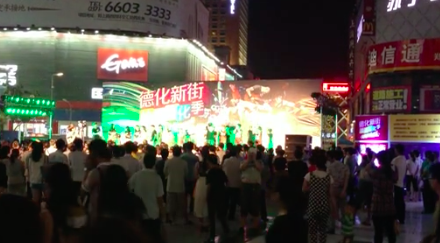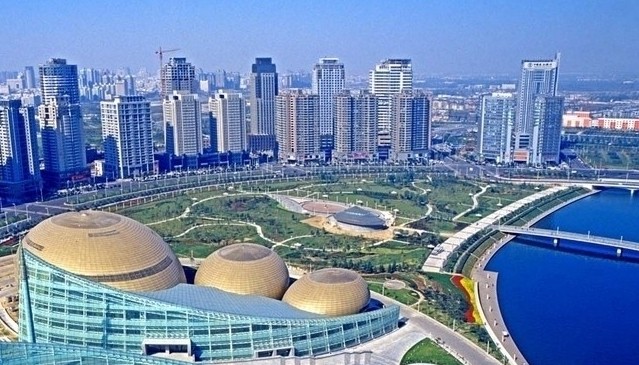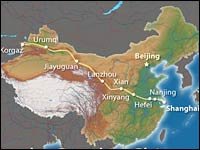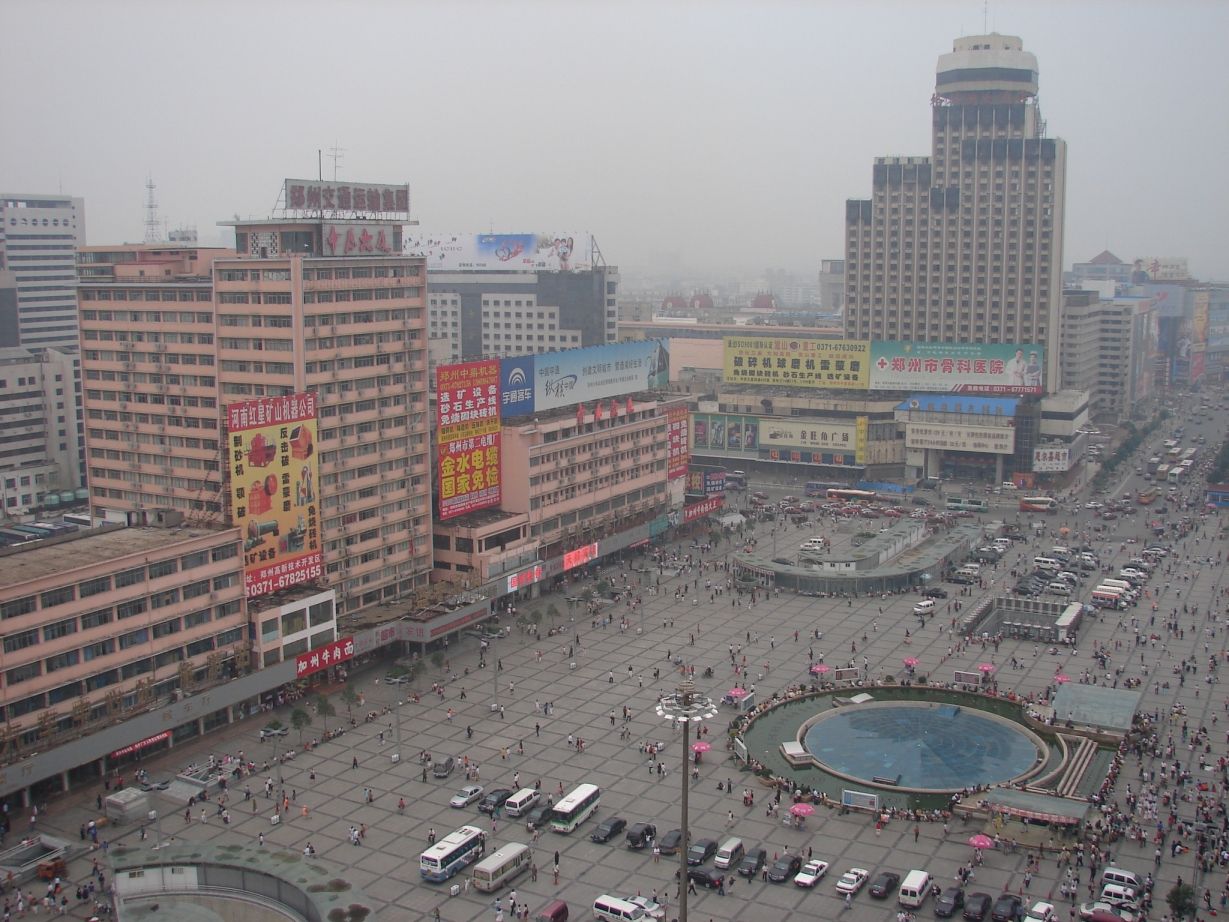Back home in the U.S., I love Chinese food.
Shrimp Lo Mein. General Tso’s Chicken. Wonton Soup. Egg Rolls. I could live on Chinese takeout. But Chinese food in China has little resemblance to Chinese food in America. It’s like the difference between Italian pizza and U.S. pizza. Only the name is the same.
Here, everything is different: the ingredients, the spices, the appearance, the smell and most of all, the taste. So far, I’ve had a hard time making the adjustment. I’m sticking to things I recognize like rice, vegetables and chicken, but that gets a little monotonous so I’m not really eating much. The good news: I’ve lost five pounds in one week. I think I’ll call it the Zhengzhou Diet, and market it on the Web.
I’ve mostly been eating at the hotel, where they serve a similar buffet for breakfast, lunch and dinner. Even at breakfast, you can get soups, meat, vegetables and heavier foods that we associate with dinner. Before I got to China, I was told the Chinese don’t eat much in the morning. But that’s not true for the Chinese businessmen, students and other guests who are staying at my hotel. They eat five-course meals for breakfast. Just thinking about it makes my stomach queasy.
Yesterday, during a long walk I took to the center of town, I stopped for lunch at a McDonald’s. (McDonald’s, KFC and Pizza Hut seem to be the most popular Western fast-food franchises in Zhengzhou.) I had a spicy chicken sandwich (tasty), fries (undercooked) and a small Coke (thankfully, with ice). The clientele was mostly middle-class and young, people who gravitate toward Western things and can afford the higher prices at Western restaurants. My meal cost 15 yuan, or about $2.45, which is cheap by U.S. standards but expensive compared to local fast food.
By the way, communal tables are standard fare at Chinese restaurants. It’s a great way to meet people, though my primitive Chinese forces me to rely primarily on miming.
One other dining note: Almost all drinks are served hot, including water and juice. I drank some hot orange juice the other day, and it wasn’t as bad as you’d think.
***
During my walk, I visited Erqi Square, the Times Square of Zhengzhou. At the center is a 200-foot tall pagoda known as Erqi Memorial Tower, which commemorates the massacre of striking railway workers in Zhengzhou on Feb. 7, 1923. Inside is a museum that chronicles the strike. You can also walk to the top and get a panoramic view of downtown Zhengzhou, a busy marketplace filled with shopping centers, supermarkets, clothing stores and restaurants. At night, I’ve read that it’s a popular place for group dancing and singing. If I join in, it will be a major blow to Chinese-American relations.
I also checked out the Zhengzhou Museum, a gargantuan bronze-faced building with a circular roof that houses exhibitions on the Shang and Zhou dynasties. They have collections of stone carvings, Buddhist statues, string instruments, board games, bronze pottery and bells that you can hear by pressing buttons on an interactive display. This shouldn’t be confused with the city’s better known Henan Provincial Museum, which I’ve yet to visit.
***
I opened a bank account today. I’ve bought cars in less time with fewer complications.
Amber, a graduate student at Henan University who is working as an administrative assistant for our English program, took me and three other teachers to ICBC (Industrial and Commercial Bank of China), the world’s largest bank. Ninety minutes and endless paperwork later, we all had Chinese bank accounts.
I deposited U.S. money in my account and asked to have it converted to Chinese yuan, but was told that I needed to go to another branch to do that. Amber and I then walked about a mile to the other branch, where we learned that they don’t convert money on Saturday. So I have to go back during the week.
They also have electronic banking, but you must use a tiny device that looks like a pocket calculator and it’s more confusing than a Rube Goldberg contraption. I think I’ll stick to the ATM.





Laughing out loud at the banking part, I really look forward to reading your blog!
I would love to see a picture (and maybe hear a recording) of the group dancing and singing….including your good self!
Great title, Rick!